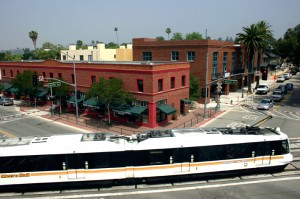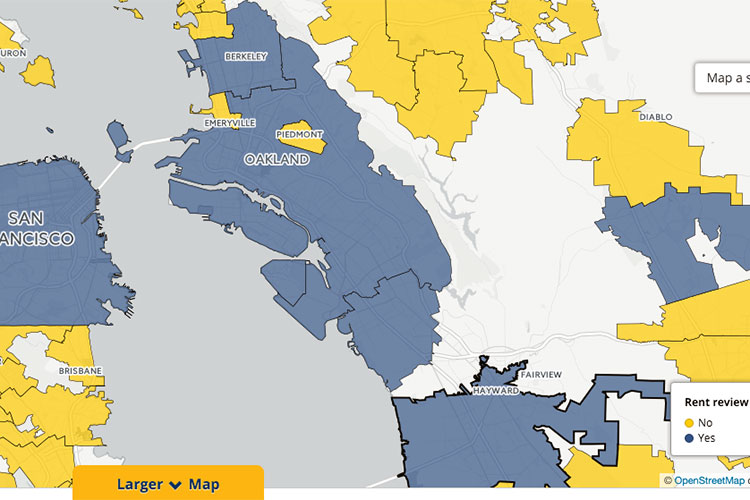 One of the common knocks on allowing new home-building near transit (as SB 827 would allow) is that it will displace low-income renters and gentrify low-income neighborhoods. The nightmare scenario for these tenants is that a developer buys and demolishes their low-income, single-family or small multi-unit building and then builds a luxury mid-rise in a fast-gentrifying neighborhood. The tenants are kicked out and can’t find comparably priced housing in their neighborhood.
One of the common knocks on allowing new home-building near transit (as SB 827 would allow) is that it will displace low-income renters and gentrify low-income neighborhoods. The nightmare scenario for these tenants is that a developer buys and demolishes their low-income, single-family or small multi-unit building and then builds a luxury mid-rise in a fast-gentrifying neighborhood. The tenants are kicked out and can’t find comparably priced housing in their neighborhood.
But let’s explore why this dynamic might happen. A neighborhood is more likely to “gentrify” if higher-income people can’t find new housing elsewhere. They’ll buy up existing buildings in places like San Francisco’s Mission or Venice in Los Angeles, which otherwise house predominantly low-income residents.
And why can’t any of these tenants who are kicked out find comparably priced housing nearby? Primarily because local governments haven’t allowed enough new home-building, particularly subsidized affordable units, to stabilize prices and give low-income residents a chance to stay in their communities. So the current housing shortage puts displacement and gentrification on steroids.
Yet many advocates for low-income renters continually shoot down options to build new market-rate housing, even if that market-rate housing would include fees and requirements to build a certain amount of affordable units. Their argument is that the “luxury housing” that would result will only contribute to gentrification and displacement.
So what does the academic literature have to say on this subject? The Urban Displacement Project at UC Berkeley (in collaboration with researchers at UCLA and Portland State) tackled this question in a research brief last year. Here are their key findings, based on a study of the relationship among housing production, affordability and displacement in the San Francisco Bay Area:
- At the regional level, both market-rate and subsidized housing reduce displacement pressures, but subsidized housing has over double the impact of market-rate units.
- Market-rate production is associated with higher housing cost burden for low-income households, but lower median rents in subsequent decades.
- At the local, block group level in San Francisco, neither market-rate nor subsidized housing production has the protective power they do at the regional scale, likely due to the extreme mismatch between demand and supply.
The key takeaway here is that new affordable housing provides the most “bang for the buck” in terms of reducing displacement and gentrification pressure.
But the study also indicates that new market-rate housing may have three primary benefits for low-income tenants:
- It can reduce displacement pressure overall (although less so than new affordable units).
- This housing stock eventually “filters” over the coming decades into low-income housing, as it gets older and therefore less desirable to higher-income earners. As a result, it provides an investment in the unsubsidized housing of the future (most low-income residents live in market-rate housing, not subsidized units).
- New market-rate development can provide local governments with the revenue they need to fund new subsidized units, via impacts fees, inclusionary zoning, or higher tax revenue.
There’s no denying that displacement is a genuine concern, and policies to promote new housing need to take that concern into account. But opposing new market-rate housing, particularly near transit, is not a solution. In fact, it’s part of the problem.
UC Berkeley has a new “urban displacement map” that helps you chart cities that are at risk of displacing low-income residents. The map examines local policies that affect low-income housing, from inclusionary zoning to developer impact fees. It will eventually cover more issues and more jurisdictions, making it a potentially valuable tool for assessing where local land use restrictions are greatest in general.
Ryan Reft takes a look at the histories of light rail efforts in both Atlanta and Los Angeles, showing how race, class and local opposition groups limited the effectiveness of both systems:
In both the case of the Blue Line and the construction of MARTA, charismatic, dedicated, and ultimately trusted political leaders fought hard for each and delivered. Could it be that simple, or have the ground rules changed so much that not even a [Los Angeles County supervisor] Kenneth Hahn or [Atlanta mayor] Sam Massell [could] deliver the goods today? In Atlanta at least, a coalition of “planners, hipsters, and other yuppies” haven’t gotten the job done. Perhaps, this time Atlanta should examine how L.A. and Kenneth Hahn managed to constructed a constituency large enough to build the light rail he dreamed of, which brought improvements to Compton and South Central, enabled suburbanites to travel between the region’s two biggest employment centers, and catalyzed award-winning transit-oriented urban development all around the county. In the 1970s, Hahn looked to the Southeast, perhaps Atlanta needs to look to the West.
Both cities suffered the same racial and class divisions that sapped public support for rail and twisted the lines into less effective routes. But I’m struck by the neighborhood opposition to development along the rail lines in both places, particularly based on a fear of gentrification.
In order for light rail to work, in terms of generating sufficient ridership to avoid becoming a huge economic liability for local transit systems, we need the lines to become growth inducing around the stations. That’s really the whole point of a rail line. Yet if we allow neighborhoods to prevent that growth, based on fears of displacement, traffic, lack of parking, and changing the character of the place, then we’ve negated the whole point of rail to begin with.
Certainly the lack of housing affordability and gentrification are reasonable concerns. But they shouldn’t be used as excuses to stop all development. Rather, that development should include a range of affordable housing, and project proponents should do their best to preserve local character.
Otherwise, we’ll end up with more sad rail histories, as we unfortunately see too much of in both Atlanta and Los Angeles.



